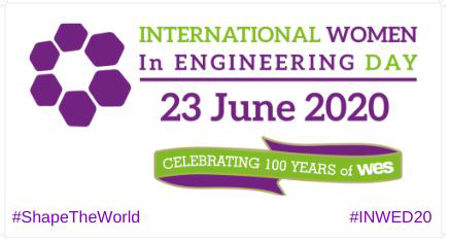While engineering took some time to become a recognized study discipline at universities, students would study science or mathematics and then specialize in engineering work after getting a degree. Women had to fight for admission to universities, long before the first of them entered tertiary education in engineering.
Historically, Wikipedia notes, Muslim women may have been the first to actually do engineering work long before universities offered options. “During the Islamic Golden Period from the 8th century until the 15th century there were many Muslim women who were inventors and engineers, such as the 10th-century astronomer Mariam al-Asturlabi.”
The first women to receive engineering degrees studied at the University of California Berkeley. Elizabeth Bragg (1876) and Julia Morgan (1894) were the first two women to receive degrees there. The Second World War opened opportunities to women as there was a major shortage of engineers. In response to the shortage, GE started “on-the-job engineering training for women with degrees in mathematics and physics, and the Curtiss-Wright Engineering Program had "Curtiss-Wright Cadettes" ("Engineering Cadettes", e.g., Rosella Fenton). The company partnered with Cornell, Penn State, Purdue, the University of Minnesota, the University of Texas, RPI, and Iowa State University to create an engineering curriculum that eventually enrolled over 600 women. The course lasted ten months and focused primarily on aircraft design and production.”
GE had experience with women engineers. In 1918, Edith Clarke became the first woman to receive an engineering degree from MIT. She was hired and worked for GE for over 20 years. She invented the Clarke Calculator - used for solving electric power transmission line issues, and became the first female professor of electrical engineering, teaching at the University of Texas for 10 years.
The first woman accepted into the American Society of Mechanical Engineers, Lillian Gilbreth, also worked at GE. There she developed improved designs for kitchen and household appliances.
Emily Roebling became the chief engineer overseeing the construction of the Brooklyn Bridge when her husband who had been in charge fell ill.
Martha Colton patented a signal flare in 1859 and was paid $20,000 by the US military for its use.
“Engineering education in the United States has a gendered history that until relatively recently prevented women from finding a comfortable place in the predominantly male technical world. Throughout the nineteenth century and most of the twentieth, American observers treated the professional study of technology as men's territory. For decades, women who studied or worked in engineering were popularly perceived as oddities at best and outcasts at worst because they defied traditional gender norms. By the 1950s, women still made up less than 1 percent of students in U.S. college and university engineering programs. Sixty years later, in academic year 2010-11, women earned 18.4 percent of engineering bachelor's degrees, 22.6 percent of master's degrees, and 21.8 percent of doctorates, and female faculty members held 13.8 percent of tenured or tenure-track positions in engineering departments. 1 Although those levels of female representation fell far short of demographic parity, by the twenty-first century, women's participation in American engineering programs had become accepted, even officially encouraged. Such a welcome should not be taken for granted. In historical terms, it represented a dramatic shift in the essence of engineering education, which was long presumed to be inherently, purely masculine”
Girls Coming to Tech: A History of American Engineering Education for Women
by Amy Bix - University of Iowa State
Major strides have been achieved, but there is still room for growth. June 23rd is International Women in Engineering Day. OnlineComponents will be celebrating the occasion and will have more posts around women in engineering over the next few days.
.
связаться:
 RU
RU
 English
English
 Chinese
Chinese
 Italiano
Italiano
 Portuguese
Portuguese
 Deutschland
Deutschland
 French
French
 Russian
Russian
 Japanese
Japanese
 Turkish
Turkish
 Korean
Korean
 Spanish
Spanish
 мой аккаунт и заказы
мой аккаунт и заказы

